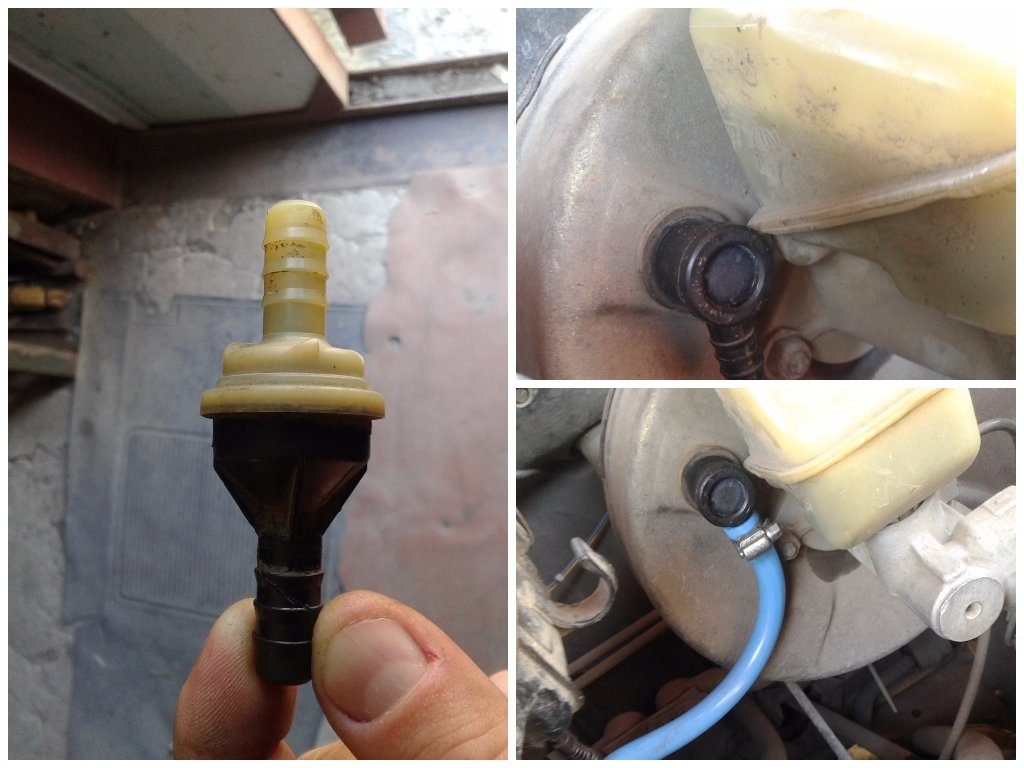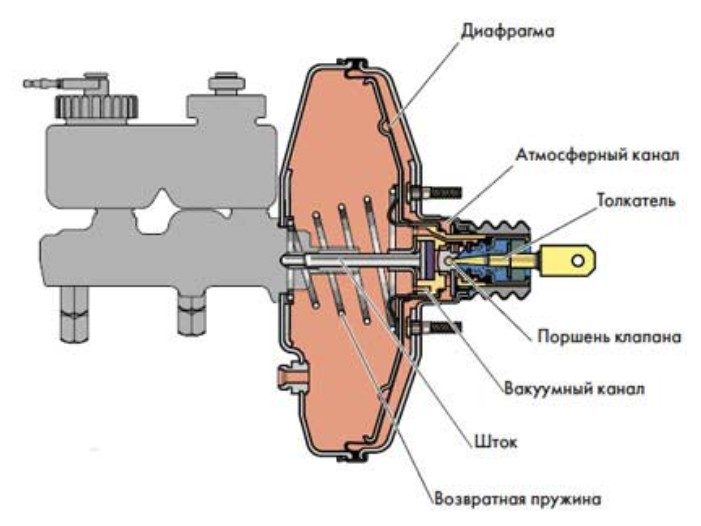
Symptoms of a Faulty or Faulty Brake Booster Check Valve
Common signs of a bad brake booster check valve include the brake pedal being hard to push, feeling spongy, or not working at all.
Many vehicles use a vacuum brake booster to provide extra power to the braking system. It is designed to provide a continuous flow of hydraulic brake fluid to the brake master cylinder while increasing brake pressure and making stopping heavy vehicles easier. This component is common on various cars, trucks and SUVs. From time to time, the brake booster is subject to damage or normal wear. This includes the brake booster check valve.
The check valve is designed to suck air that has entered the brake booster, preventing additional air from entering the cylinder. This protects the brake lines from the formation of air bubbles, which can seriously affect braking performance. This part connects the brake booster housing to the vacuum hose and is a safety solution that allows the brakes to work even when the engine is off.
Usually the brake booster check valve is not checked during scheduled maintenance, but there are times when this part may show signs of wear or the brake booster check valve has completely failed. Here are a few of these warning signs so you can determine if there is a potential problem with the brake booster check valve. Remember these are general warning signs and should be professionally diagnosed by a certified mechanic and properly repaired.
1. The brake pedal is hard to press
When the brake booster check valve is working properly, depressing the brake pedal is easy and very smooth. When the check valve does not work properly, the brakes become much more difficult to work. In particular, the pedal changes from smooth and soft to aggressive and very difficult to push. This is due to the excess pressure inside the master cylinder, which is designed to regulate the check valve. A brake pedal inconsistency is a warning sign that there is a potential safety issue with the brakes and should be checked by a certified mechanic immediately.
2. Brakes feel spongy
As the brake booster check valve problem increases, air bubbles will gradually travel down the brake lines to the brakes themselves. In this case, the air that must be removed by the check valve enters the master cylinder and then into the brake lines. This causes a decrease in pressure within the brake lines and can result in soft braking. While driving, it will feel like the brake pedal has sagged, but the brakes will also take longer to stop the car.
This situation calls for an immediate check of the brake system. When air enters the brake lines, it is usually trapped due to the fact that the brakes are hydraulically controlled. To remove air from the brake lines, it is necessary to bleed the brake system. Thus, if you encounter a similar problem in your vehicle, stop driving as soon as possible and have the entire braking system professionally checked.
3. Brakes stop working
In the worst case, a complete failure of the brake booster check valve occurs, which ultimately leads to the failure of the brake system. Hopefully you never get to this point, but if you do, stop the car safely, have it towed home and see a mechanic who is certified to inspect and replace the brake system. Depending on what is actually broken, repairs can range from a simple replacement of the brake booster check valve to a complete overhaul and replacement of the brake system.
The brake booster check valve is important for the brake system and ensures safety. It is because of these facts that the above problems and symptoms should not be ignored or put off for another day. Have an ASE Certified Mechanic check, properly diagnose, and make the appropriate service adjustments to your brakes.
